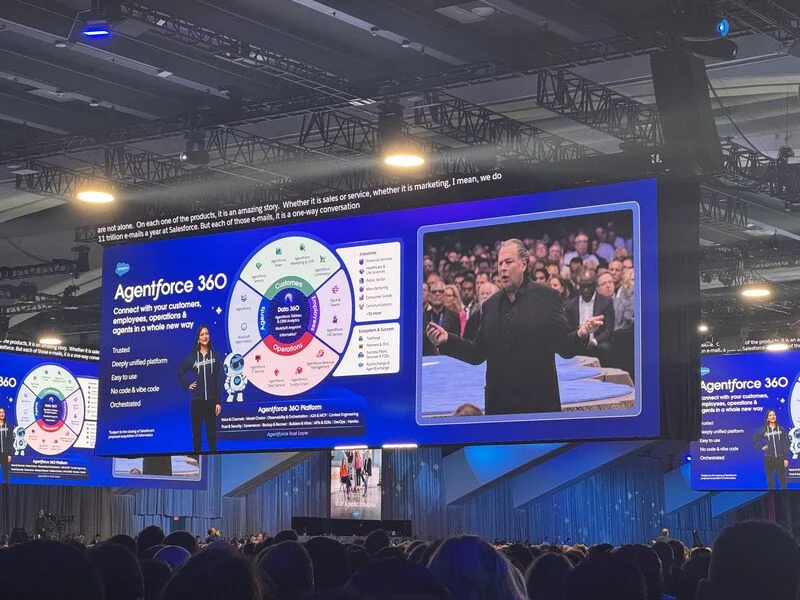How Companies Can Strengthen Their IT Teams
24 Apr, 20245 minWith new and emerging technologies continually changing how businesses operate, the signific...

With new and emerging technologies continually changing how businesses operate, the significance of effective IT teams cannot be understated. As companies become increasingly dependent on state-of-the-art digital technology for innovation and efficiency, supporting and empowering IT teams has become a top priority. These teams are instrumental in maintaining digital infrastructure, ensuring cyber security, and implementing cutting-edge solutions.
Given the pressing need for tech companies to help their IT professionals remain innovative in the face of growing pressure from competitors, IT managers are having to come up with answers to this all-important question - how can businesses ensure that their IT teams are as robust as possible?
In this guide, we’ll explore the importance of IT teams in an era of continual technological change and delve into the key strategies your organisation should implement to strengthen the efficiency and effectiveness of your IT team.
The Significance of IT Teams in the Digital Age
As digital transformation continues to reshape many aspects of modern business operations, the importance of IT teams has never been greater. With era-defining trends like the rise of AI, cloud computing, and cyber security concerns continuing to revolutionise the tech industry, companies are increasingly relying on their IT teams' skills to remain competitive in an ever-more digitised world.
IT teams are responsible for managing, maintaining, and securing the technological infrastructure and play a vital role for companies across all sectors. They are typically tasked with overseeing networks, servers, and databases that are key for day-to-day operations. In addition to the overall running of a company’s hardware and software, their other duties may include providing technical support for customers and employees, managing large amounts of data, and enhancing customer experiences by creating user-friendly interfaces.
IT teams are also instrumental in safeguarding sensitive data, networks, and systems from cyber security threats. Cyber security has become a top priority for businesses in recent years, not least due to the evolving, pervasive nature of cyber threats. According to cyber security figures compiled by Astra, the US experiences 2,200 cyber attacks per day. The research also found that a data breach costs an average of $9 million, and cybercrime in 2023 is estimated to have cost a staggering $8 trillion.
Despite the importance of securing a robust IT team, many IT managers experience challenges with finding the right tech talent to fill key roles. There are several factors behind these recruitment difficulties, including:
- Shortage of IT Talent: There is a shortage of candidates with specific technical skills and expertise in areas such as cybersecurity, data science, cloud computing, AI, and machine learning. The rapid pace of technological advancements often outpaces the availability of qualified professionals.
- Rapid Pace of Digital Change: The seemingly endless evolution of technology leads to changing skill requirements, and recruiters may find it challenging to find candidates with up-to-date skills and experience in the latest technologies.
- Retention of High-Quality IT Professionals: Once recruited, retaining top IT talent can be a difficult task. Unwelcome factors such as competing job offers, a perceived lack of career growth opportunities, or dissatisfaction with company culture can lead to poor retention rates.
- Lengthy Hiring Process: It’s no secret that the hiring process for IT jobs tends to be long-winded; while this may be necessary, a slow and inefficient hiring process can frustrate candidates and lead them to accept offers elsewhere. To tackle this problem, companies must streamline their recruitment process, providing candidates with a positive and engaging experience.
The IT sector is currently experiencing an unprecedented recruitment challenge. Many companies find it difficult to attract and retain top IT talent; however, implementing the right strategies may overcome these hiring challenges. If your business wants to bolster your tech recruitment efforts, we urge you to read our two-part guide, ‘How To Attract And Retain Top IT Talent’. Part one covers talent attraction strategies, while part two delves into how to retain the best and brightest IT professionals.
Top Strategies For Improving Your IT Team
As we alluded to earlier, the IT sector is highly competitive, with ongoing talent shortages and the rapid development of innovative technology driving the demand for top tech talent. To gain an edge over the intensifying competition, IT managers must not only make their recruitment strategies all the more robust, but they also need to ensure that their existing IT teams are operating efficiently.
With a top-notch IT team able to facilitate seamless online experiences for your employees and customers, your organisation will be able to bolster your employer brand amid an ever-more competitive market. By putting the right strategies in place, you can rest assured that your IT team will maintain technological infrastructure, ignite innovation, and guarantee cyber security.
Here are the top methods you should employ to improve the effectiveness of your IT team:
1. Establish Clear Objectives and Expectations
At the outset of developing your plan for strengthening your IT team, laying out a list of clear and achievable goals is essential. As an employer, you must ensure that every team member understands their roles, responsibilities, and what is expected of them. Be sure to establish key performance indicators to measure individual and team performance, providing regular feedback to help them align their efforts with your business objectives.
Research shows that communicating clear goals and expectations correlates with higher rates of productivity. According to Hypercontext’s State of High Performing Teams report, 59% of tech workers state that having an explicit set of aims and objectives is the biggest factor contributing to the level of output. This finding underlines the significance of ensuring that your tech talent is well aware of their expectations.
So, what are the best practices associated with establishing clear objectives and expectations for IT teams? Here are our top tips:
- Use the SMART (Specific, Measurable, Achievable, Relevant, Time-Bound) model to create a list of achievable objectives
- Engage in collaborative goal setting by achieving key stakeholders, including IT managers, team members, and people from other relevant departments
- Assist IT teams in understanding the priority of objectives and encourage them to take ownership of their specific roles
- Acknowledge and reward IT team members for meeting or exceeding objectives
Crucially, providing your IT team with well-defined objectives will give them insights into how their efforts are actively contributing to the success of your company as a whole. This valuable incentive should not be overlooked, as providing staff with a sense of purpose is key when it comes to talent retention.
2. Identify Key Recruitment Areas
Identifying and addressing areas that would benefit from hiring top talent can significantly enhance the effectiveness of IT teams. By adopting this proactive, data-driven approach to recruitment, your organisation has a greater chance of building a high-performing, innovative IT team with the skills to thrive in the ever-evolving tech sector.
To successfully identify recruitment needs, managers must frequently analyse team needs and stay up to date with trends and developments in the world of IT recruitment. The IT sector has a reputation for its dynamic, fast-paced nature, with groundbreaking innovations like AI and cloud computing forcing tech businesses to constantly reevaluate their recruitment needs.
Here are the steps you should follow to pinpoint the areas in your IT department where additional support may be required:
Carry Out a Skills Gap Analysis
IT managers should evaluate their current IT team's skills and expertise against the company's goals and technology needs. They should identify areas where their team lacks specific skills or experiences. This analysis will help them pinpoint the skills that are in high demand but lacking within their current workforce.
Keep An Eye on Industry Trends
Managers should also keep up-to-date with the latest trends, technologies, and methodologies in the IT sector. This includes emerging programming languages, cloud computing, cyber security, AI, and machine learning technology. Understanding these trends helps in identifying the skills that will be crucial for their organisation's growth.
Leverage Targeted Tech Recruitment Strategies
Leveraging multiple recruitment channels is an effective way to attract top IT talent. This can include online job boards, social media platforms, professional networking sites, IT-specific forums, tech-focused communities, and industry events.
If you feel you’d benefit from professional hiring support, collaborating with a specialised IT recruitment agency with industry-leading services would be a forward-thinking choice.
3. Facilitate Training and Development Opportunities
Another important strategy for strengthening IT teams is facilitating training and development opportunities. Actively striving to enhance your IT team’s skills and expertise will provide your organisation with a selection of benefits, including increased employee engagement, better problem-solving, and higher talent retention. With a capable IT workforce, your company will be well-equipped to provide innovative, tech-driven solutions to a wide range of challenges.
A wealth of research supports the idea that comprehensive training and development programs go hand in hand with greater levels of productivity and talent retention, particularly among tech workers. According to a LinkedIn report, 94% of employees claim that they would stay at a company longer if it invested in learning and development opportunities. Additionally, a global survey from Gallup found that companies are 17% more productive when they offer the training that their employees need.
Let’s take a look at the actions businesses should take to strengthen IT teams through training and development:
- Cater to all learning styles by offering a variety of training types, including workshops, online courses, mentorship programs, and hands-on projects
- Create a workplace culture that celebrates continuous learning by providing employees with dedicated time for learning, recognition of achievements, and encouragement to pursue professional qualifications
- Customise training programs to suit the individual needs and career goals of each employee
- Evaluate the impact of training programs by measuring their impact on skill development, team performance, and business goals
4. Invest in Cutting-Edge Technology
Last up on our list is leveraging innovative technologies to optimise your IT team’s performance and processes. Providing your team with the right tools and resources necessary to perform their duties efficiently is a fundamental step in securing a high-performing IT department. Investing in the latest software, hardware, and infrastructure will demonstrate to your staff that you are dedicated to their success.
Here are the key ways in which IT teams may benefit from utilising the best possible technology:
- Reduction of repetitive tasks due to artificial intelligence and robotic process automation technologies
- Streamlined workflows via state-of-the-art collaboration and communication tools
- Improved cybersecurity through modern security solutions like firewalls and intrusion detection systems
- Improved levels of innovation owing to increased use of emerging technologies such as cloud computing, blockchain, and the Internet of Things
As we can see, there are various technical advantages to investing in high-tech equipment, but are there any business benefits? The answer to that question is a resounding yes.
Not only will devoting sufficient financial resources to innovative tech boost productivity and team morale, but it will also help you to reduce overall costs and attract and retain new customers. Investing in state-of-the-art technology also appeals to investors who can support your business financially, helping your brand remain a competitive player at the forefront of the tech space.
However, it is vital to consider the strategic implications of any technology investment. Before allocating financial resources, be sure to factor these key aspects into your decision-making process:
- Alignment with Business Goals: IT managers should ensure that investments in technology align with their organisation’s long-term business goals.
- Return on Investment Potential: Companies must consider the ROI potential of any investment in technology. Regularly assessing the impact of investments on a business’s financial performance is also essential for ensuring that they’re delivering the expected advantages.
- Scalability: Scalability is a crucial consideration when it comes to deciding whether to make a technology investment. Your company should select technologies that can scale in line with your growth, thereby reducing the need for regular technological overhauls.
- Training and Support: Every time your organisation invests in new technology, you also need to invest time in training and supporting your staff.
Key Takeaways From How Companies Can Strengthen Their IT Teams
In the face of digital transformation and growing competition from businesses, it is paramount for organisations to strengthen their IT teams by implementing the right strategic measures. Despite the vital role of IT teams, the tech industry faces challenges in recruiting and retaining top talent due to skill shortages, evolving skill requirements, and lengthy hiring processes.
By setting achievable goals, addressing skill gaps, offering tailored training, and providing the latest tools, businesses can empower their IT teams to navigate technological advancements effectively. These actions enhance team productivity and retention and align IT efforts with overarching business objectives.
The success of IT teams hinges on the organisation's adaptability, innovation, and commitment to digital transformation. Embracing these strategies will empower IT teams to thrive amid the ever-evolving technological landscape, ensuring sustained competitiveness in today's digital era.
Dedicated to Providing Exceptional Tech Recruitment Solutions
At MA, our dedicated consultants are passionate about connecting our clients with the best and brightest tech professionals. As one of Europe’s leading tech recruitment agencies, we have earned an esteemed reputation for our personalised, people-led approach.
Whether you are a candidate looking for the latest IT jobs or a tech firm looking to strengthen your team by hiring outstanding talent, we have the means to help you achieve your goals.
Contact us today to discover more about the industry-leading recruitment solutions we offer.



